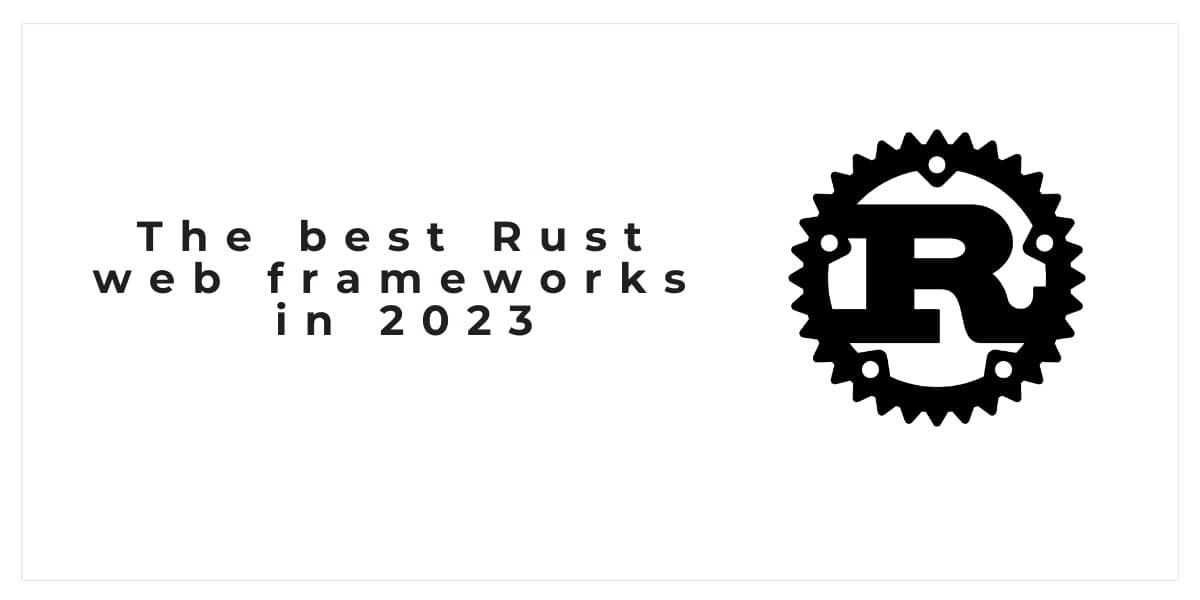The best Rust web frameworks in 2023 In 2023, which rust web framework will be the best for developing APIs and web applications? Here, we'll look at some of the most popular frameworks currently in use. We'll also explore rust web development features and code examples.
A web framework is a software library that provides a standard way to build and deploy web applications. Web frameworks typically include libraries for everyday tasks such as routing (mapping URLs to resources), templating (generating HTML from data), and database access.
Rust is a programming language that offers great potential for web development. It is fast, safe, and provides many perfect features for building web applications. Furthermore, documenting APIs in Rust is relatively straightforward and well-supported by the language and its ecosystem. Here are some of the best frameworks and their features.
Best Rust web frameworks
Rocket
Rocket is a web framework for Rust that makes it simple to write fast web applications without sacrificing flexibility or type safety. Rocket follows a "convention over configuration" philosophy and aims to get you up and running with minimal configuration. It integrates tightly with the Rust ecosystem, making it easy to use existing libraries and tools.
Here is a basic example not meant for production:
mod user {
use super::*;
pub struct User {
id: Uuid,
name: String,
email: String,
}
impl User {
pub fn new(name: &str, email: &str) -> User {
User {
id: Uuid::new_v4(),
name: name.into(),
email: email.into(),
}
}
pub fn get_id(&self) -> &Uuid {
&self.id
}
pub fn get_name(&self) -> &str {
&self.name
}
pub fn get_email(&self) -> &str {
&self.email
}
pub fn set_name(&mut self, name: &str) {
self.name = name.into();
}
pub fn set_email(&mut self, email: &str) {
self.email = email.into();
}
}
}
use user::User;Tide
Tide is a web framework for the Rust programming language. It provides a clean and easy-to-use API for building web applications. Tide is based on the rust actix web framework.
Tide features:
- async/await support
- type safe routing
- request guards
- templating support
- session management
- websockets support
Code example: for a "Hello, world" web application using Tide:
use tide::{Request, Response};
async fn hello(_: Request) -> Response {
Response::new(200).body_string("Hello, world!")
}
fn main() {
let mut app = tide::new();
app.at("/").get(hello);
app.run("127.0.0.1:8080").unwrap();
}This will start a web server listening on http://127.0.0.1:8080 that responds to all requests with "Hello, world!".
Actix-web
Actix-web is based on the Actor model. It is a high-speed web framework written in Rust. Actix-web provides a robust set of features for building web applications, including:
- Supports multiplexing
- Asynchronous I/O
- WebSockets
- Middleware support
Code example:
use actix_web::{web, App, Responder};
async fn index() -> impl Responder {
"Hello, world!"
}
fn main() {
App::new().route("/", web::get().to(index)).run();
}Run the code example with cargo run.
Warp
Warp is a fast, flexible web server framework built on top of tokio. It's easy to use and comes with a lot of features out-of-the-box, such as:
- Automatic TLS
- HTTP/2 support
- Server-Sent Events (SSE)
- Websockets
- Path parameters
- Query parameters
- JSON body parsing
- Multipart forms
- Static file serving
Here's a simple "Hello, world" example using Warp:
use warp::Filter;
fn main() {
let hello = warp::path!("hello") // Match /hello/...
.and(warp::path::end()) // ...but only at the end (no more '/'s after this)
.map(|| "Hello, world!"); // Respond with a simple body
warp::serve(hello).run((["127.0.0.1", "8080"]).into());
}Axum
This web framework is designed to be fast, efficient, and lightweight. The Erlang programming language inspires it, providing developers with a high concurrency level. Axum is perfect for building microservices, real-time applications, and low-latency systems.
Its features include:
- Erlang-inspired actor model for concurrency
- Low-latency and high performance
- Support for WebSockets and other protocols
- Asynchronous I/O
Code example:
use actix_web::{web, App, Responder};
fn index() -> impl Responder {
"Hello, world!"
}
fn main() {
App::new().route("/", web::get().to(index)).run();
}Hyper
This framework is built on top of the Rust standard library and provides support for a wide range of features. These include:
- Asynchronous I/O: This allows you to use features like async/await to make your code more efficient.
- HTTP2 support: This means that you can take advantage of the latest standards in web development.
- Fast and lightweight: Hyper is designed to be fast and lightweight, so it's perfect for developing high-performance web applications.
- Easy to use: The framework is easy to use, so you can get started with developing your web applications quickly.
- It's also effortless to use, and it has excellent documentation.
Code example:
extern crate hyper;
use hyper::{Body, Response, Server};
use hyper::rt::Future;
use hyper::service::service_fn;
const PHRASE: &str = "Hello, World!";
fn main() {
// Bind to the address and call the `run` function, passing in a closure.
// The closure contains our entire HTTP service.
let addr = "127.0.0.1:3000".parse().unwrap();
let server = Server::bind(&addr)
.serve(|| service_fn(|_| {
// We return a `Future` that resolves to a `Result` when the HTTP
// body has been fully read. In this case, just return an empty
// successful result.
future::ok(Response::new(Body::from(PHRASE)))
}))
.map_err(|e| {
// If any error happens, log it to STDOUT.
println!("server error: {}", e);
});
// Run this HTTP service on the current thread.
hyper::rt::run(server);
}Any developer using a rust api framework needs to know about Hyper. It comes with a lot of features, and it is easy to use. The documentation is also top-notch, making it a great learning resource for new developers.
These are just some of the best rust web programming frameworks out there. All of them have strengths and weaknesses, so it's up to you to decide which is best for your needs. These Rust web frameworks offer advantages over other frameworks including:
- Excellent performance
- Superior memory safety
- A wide range of features
- Easy to use
If you're looking for a rust web framework that can offer these benefits, then you should definitely check out one of these frameworks. They are excellent choices for developing web applications.








